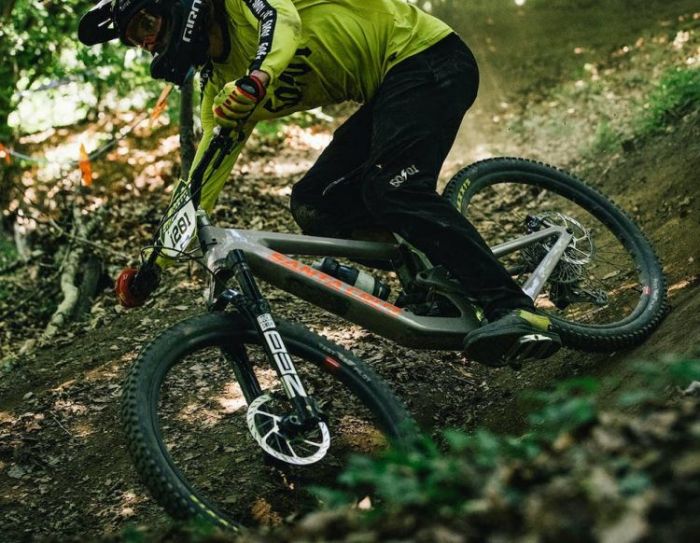TWe’ve selected the 11 best bike computers for your reference.
A good bike computer can provide you with a huge amount of cycling data to track your rides as well as navigate your routes. But choosing a bike computer that works for you is not an easy task. Even the most affordable bike computers today can provide a very large amount of useful information. They can display speed, distance, and time data for you as well. Most will include features like GPS chips and the like. Of course, this costs more money.
As budgets increase, some bike computers can often be paired with the best bike trainers. They can connect to heart rate monitors, power meters, and even smart lights. They will also pair with your smartphone to alert you to calls and texts while riding, let selected contacts know your location, and send timely crash alerts.
If you still don’t know how to choose a bike computer, you can take a look at the bottom of our list of common selection questions for you, which we believe can help you answer. If you like our articles, welcome to follow our website and we will follow up with more questions that you are interested in.
Best Bike Computers List
- Garmin Edge 1040 Solar ($749.99)
- Garmin Edge 130 Plus ($199.99)
- Garmin EDGE 830 ($399.99)
- Garmin Edge 31030 Solar ($599.99)
- Lezyne Mega XL ($199.99)
- Bryton Rider 420 ($219.95)
- CATEYE QUICK WIRELESS CYCLE COMPUTER ($59.95)
- Hammerhead Karoo 2 ($449)
- Wahoo Elemnt Roam (v2) ($199)
- Wahoo Elemnt Bolt ($299.99)
- Sigma ROX 11.1 Evo ($169.99)
1. Garmin Edge 1040 Solar ($749.99)
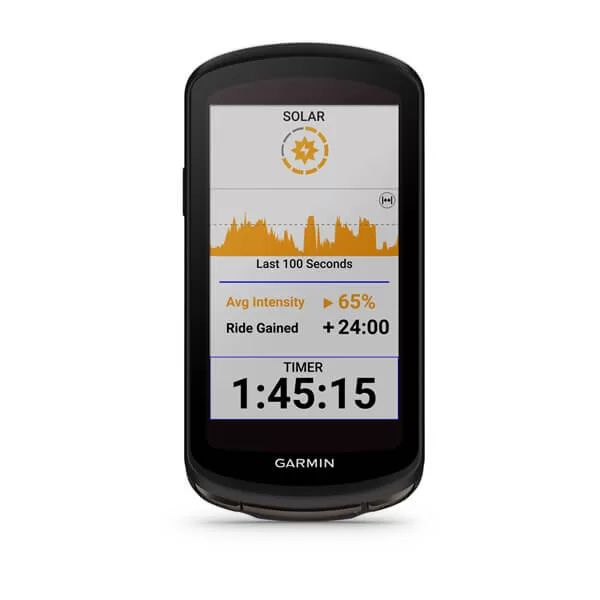
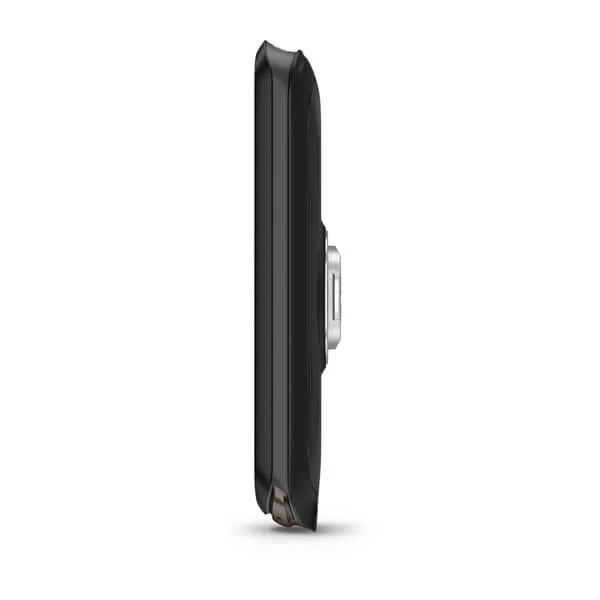
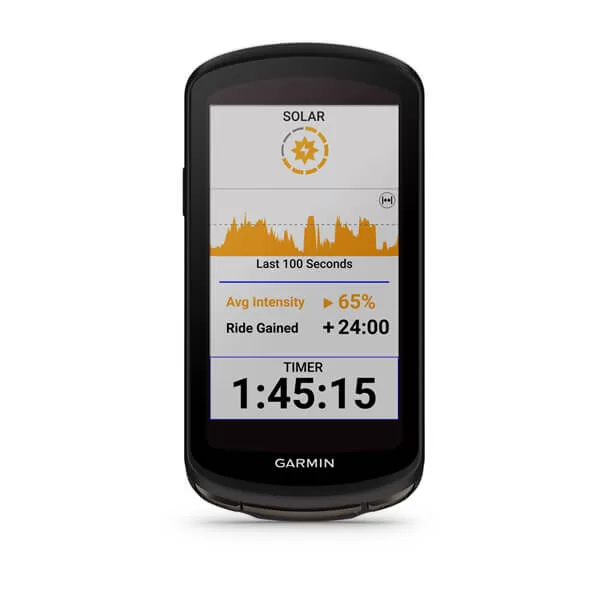
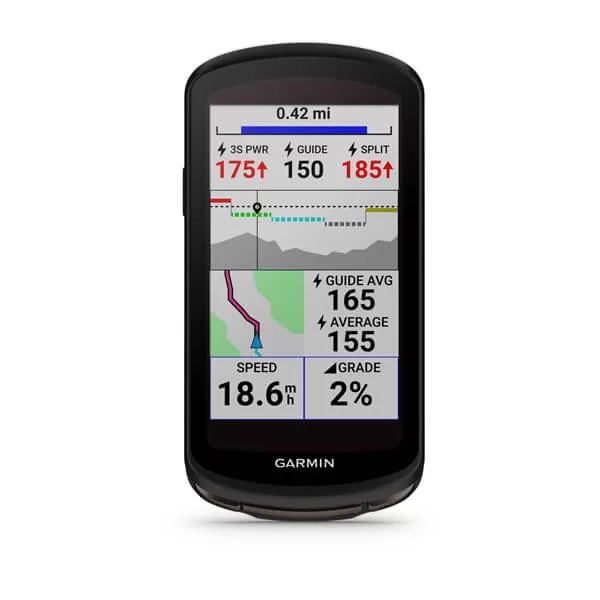
- Battery: 45 hours
- Connectivity: ANT+, Bluetooth, wireless network
- Matching applications: Yes
- Navigation: Garmin Cycle Maps
- Color screen/Touch screen: Yes / Yes
- Screen size: 3.5 inches / 89 mm
- What we like about it: Solar-powered extra-long battery life and clearer and more concise navigation.
- What we don’t like about it: The larger screen is somewhat redundant in situations where navigation is not needed.
The ability to power the Garmin Edge 1040 Solar via solar power is very impressive. It has a range of 45 hours in a single session and over 100 hours in power-saving mode. The improved user interface is easier to navigate than other models, and the home page can be customized with digital segments to easily navigate through recent activity history, training plans, and weather forecasts. Link to Garmin Connect on your phone to see your training as well as statistics and recommendations.
The larger screen may fill up your handlebar space and make the oversized screen a bit redundant when not using navigation. If you usually ride familiar routes, then I suggest you take a look at the ATEYE QUICK WIRELESS CYCLE COMPUTER. but I have to say, it strikes me as more than just a recorder, it’s more like your attentive sports butler, telling you your training status and recovery time, etc.
2. Garmin Edge 130 Plus ($199.99)
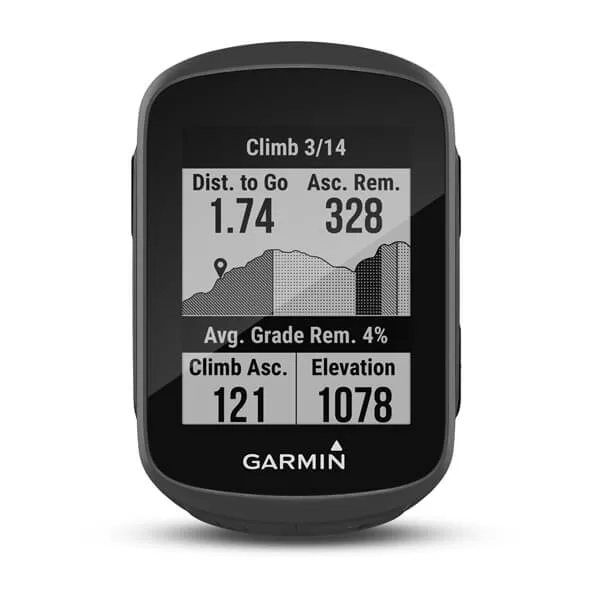

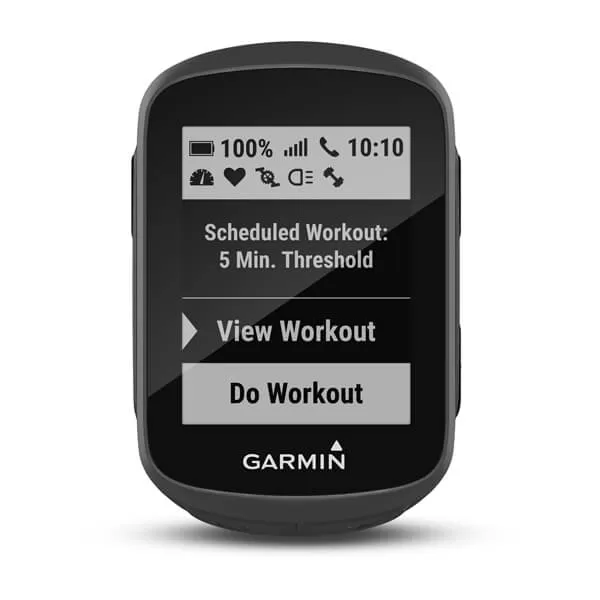
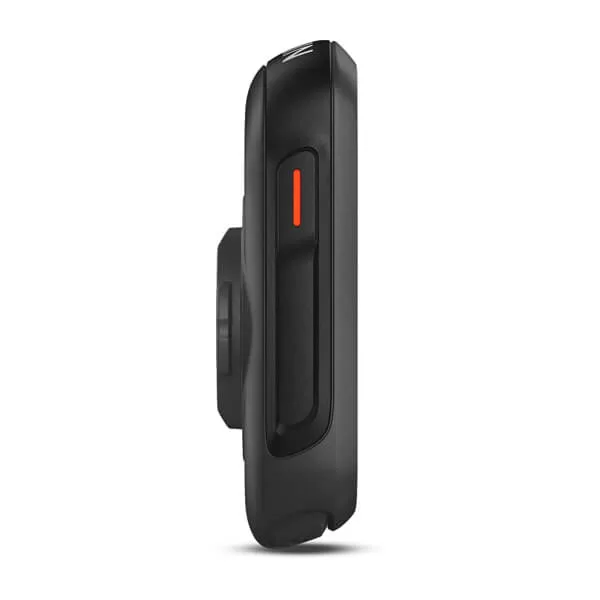
- Battery: 12 hours
- Connectivity: ANT+, Bluetooth
- Matching applications: Yes
- Navigation: Breadcrumb-style mapping
- Color screen/Touch screen: none/none
- Screen size: 1.8 inches / 45 mm
- What we like about it: Small screen with plenty of features and cheap price to enjoy Garmin’s ecology.
- What we don’t like about it: The monochrome screen and the lack of advanced features.
Very feature rich for this compact contraption. The addition of Accelerometer, ClimbPro, and Structured Training are significant improvements to the regular version, and you get Garmin’s system for very little money. You can purchase a matching taillight and radar system to use in tandem to improve your safety. There are also small features like VO2 Max and dynamic indicators for mountain bikes.
The monochrome screen and lack of advanced features do seem a bit backward in modern times. If you want to look at something more advanced you can go with the Garmin Edge 1030. but at this price, this bike computer is the best option I think. It’s very small on your handlebars yet does a great job of both simple navigation and post-ride data analysis.
3. Garmin EDGE 830 ($399.99)
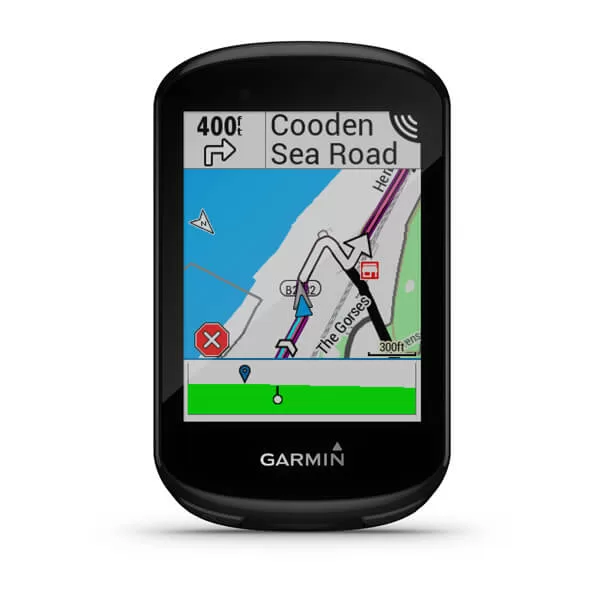
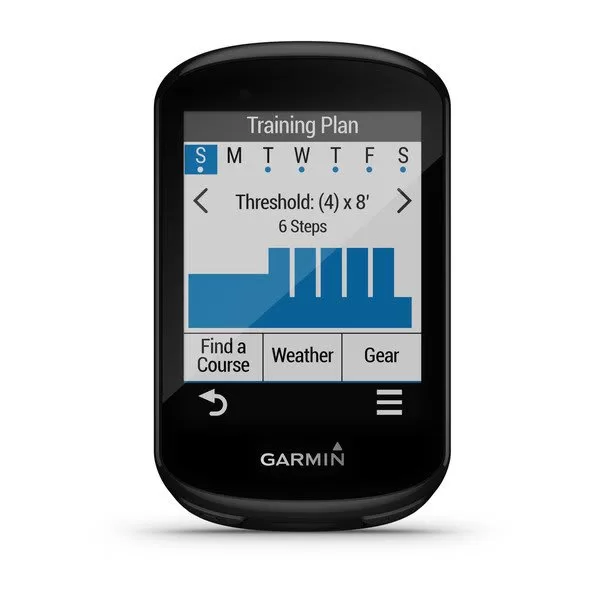
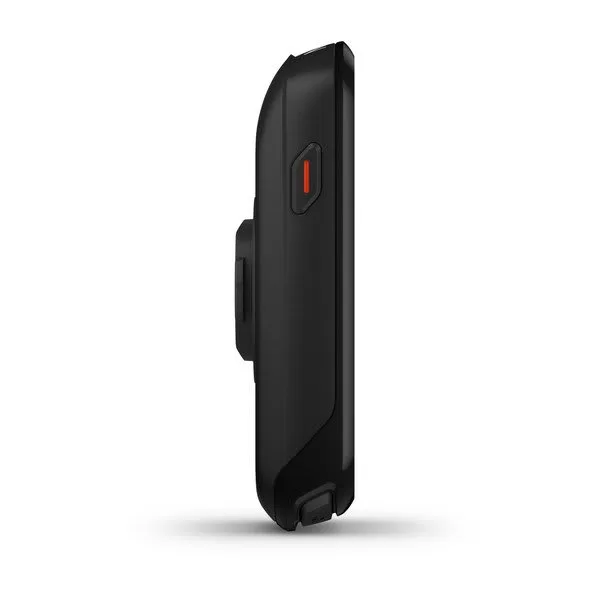

- Battery: 20 hours
- Connectivity: ANT+, Bluetooth, wireless network
- Matching applications: Yes
- Navigation: Garmin Cycle Maps
- Color screen /Touch screen: Yes / Yes
- Screen size: 2.6 inches / 66 mm
- What we like about it: Practical GPS, lightweight.
- What we don’t like about it: Event monitoring is too sensitive.
An impressive array of interesting features that are truly practical. The leading GPS allows it to stand out from the crowd of competitors. The data and display on the device are very easy to read when you’re riding, and with the sensors, it’s an unimaginably rich experience. The battery provides up to 18 hours of battery life and weighs 42g less than the regular model, which is the most attractive highlight for consumers.
In actual riding, we found that it was a little too sensitive in some of the event monitoring and I had to turn those features off while riding. If you want more accurate monitoring, take a look at the Garmin Edge 1040 Solar. But for those riders on a budget, this is the best option in terms of price/performance. You can easily link it to a Garmin smartwatch, Varia radar, lights, etc., or you can go to other parts of the brand that connect nicely.
4. Garmin Edge 31030 ($599.99)
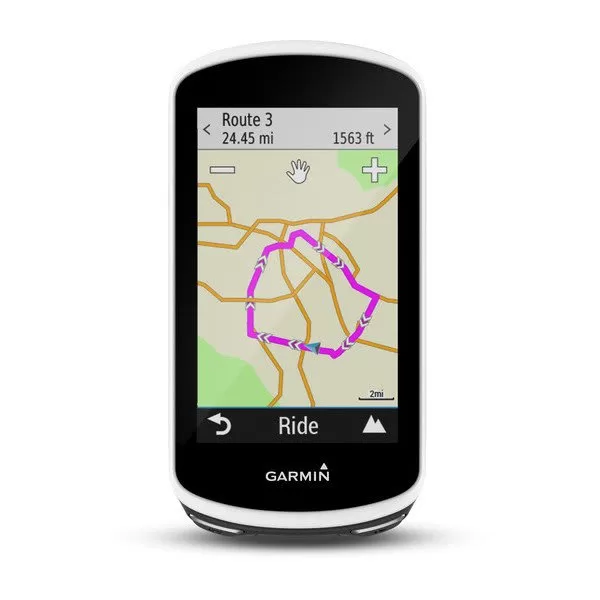
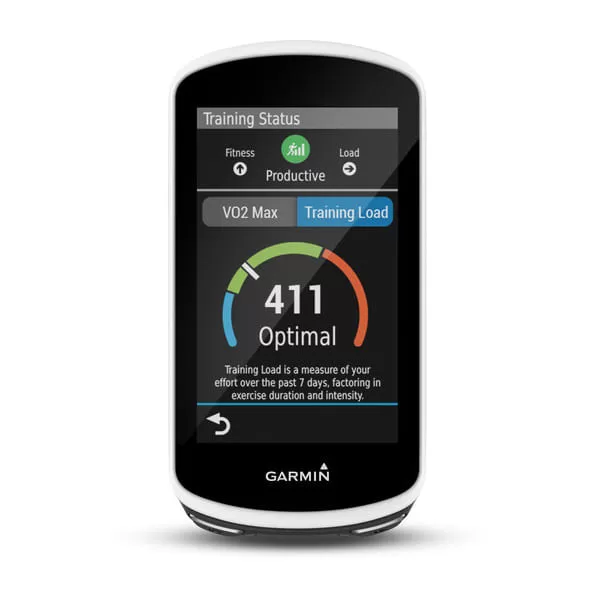
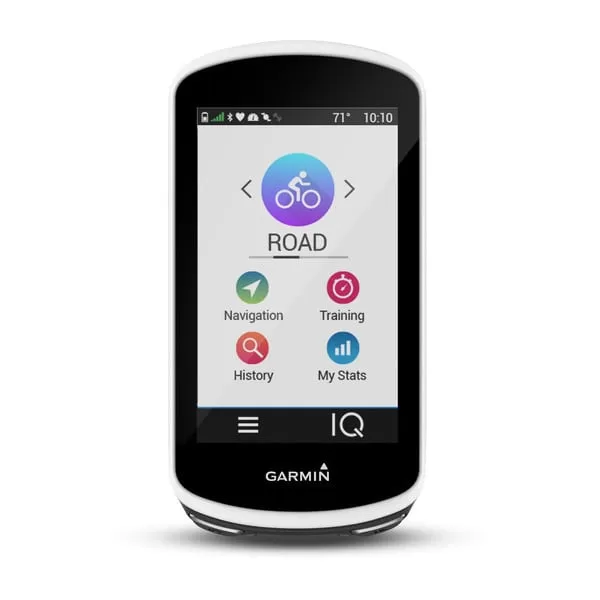
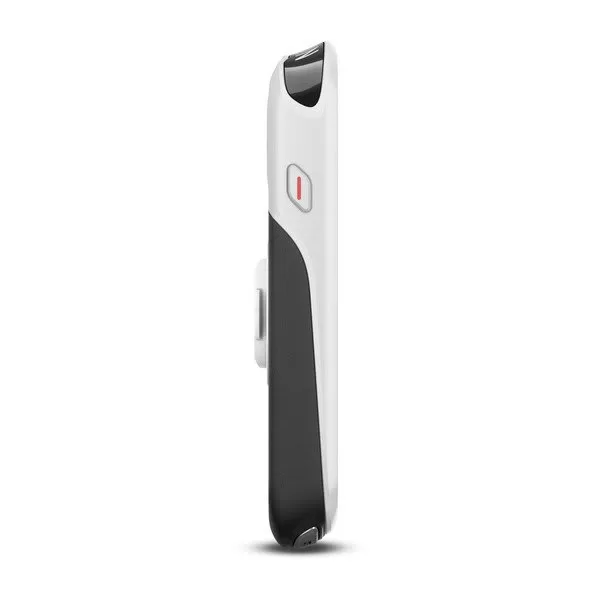
- Battery: 24 hours
- Connectivity: ANT+, Bluetooth, wireless network
- Matching applications: Yes
- Navigation: Garmin Cycle Maps
- Color screen /Touch screen: Yes / Yes
- Screen size: 3.5 inches / 89 mm
- What we like about it: Oversized specifications and a very comfortable visual appearance.
- What we don’t like about it: The weight is a bit heavy and it looks a bit abrupt when installed.
It is very large in both size and specification, with a large and clear display. And the long-distance navigation is very practical, both the map and the digital display are very easy to see. The functionality is no different from a top-of-the-line bike computer, and both navigation and training advice can be used on it perfectly. Battery life is impressive and even exceeded that in my actual use.
It weighs more, as I’m sure you’ve come to expect when you see this size. In the test I always felt like a phone was mounted on the handlebars, it looked too big. If you want something smaller, take a look at the Garmin EDGE 830. But with the same great navigation features at a much cheaper price than the first one, it is a good choice for navigation on long rides.
5. Lezyne Mega XL ($199.99)
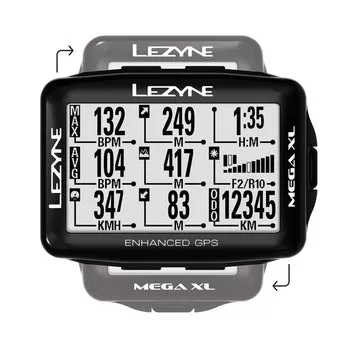



- Battery: 48 hours
- Connectivity: ANT+, Bluetooth
- Matching applications: Yes
- Navigation: Breadcrumb, downloadable offline maps
- Color screen/Touch screen: none/none
- Screen size: 2.7 inches / 69 mm
- What we like about it: Big memory, big battery, offline navigation.
- What we don’t like about it: The black and white display and the non-touch screen.
The 48-hour battery life is extremely durable, and it took up to three months of use throughout our tests before the power was completely drained. The extra memory can store over 800 hours of riding data. The accompanying app handles and connects to push data directly to Strava, and you can also use on-screen notifications to let you know quickly who’s calling you during a ride.
The black and white display and the inability to touch do seem a bit backward. But considering the competitors at the same price, this is the best choice. But it’s worth mentioning that the navigation function, which is not available at the same price, can achieve the navigation function by connecting your computer and downloading offline maps in advance. This may be one of the bike computers that you can spend the least amount of money on to get the navigation function.
6. Bryton Rider 420 ($219.95)
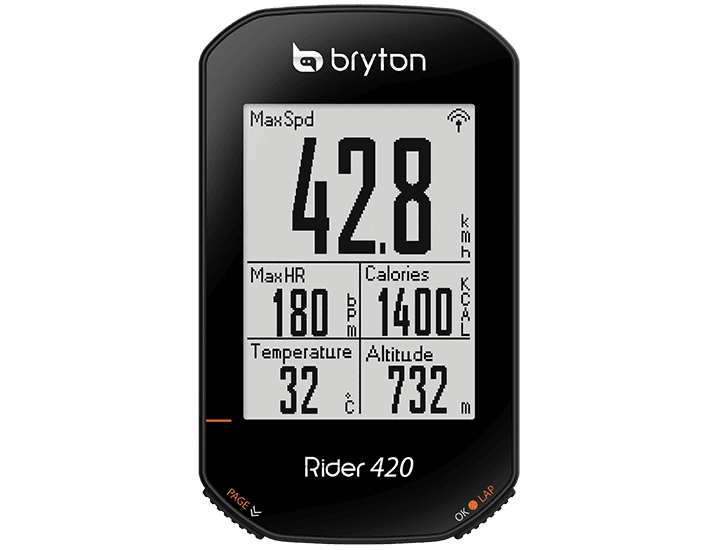
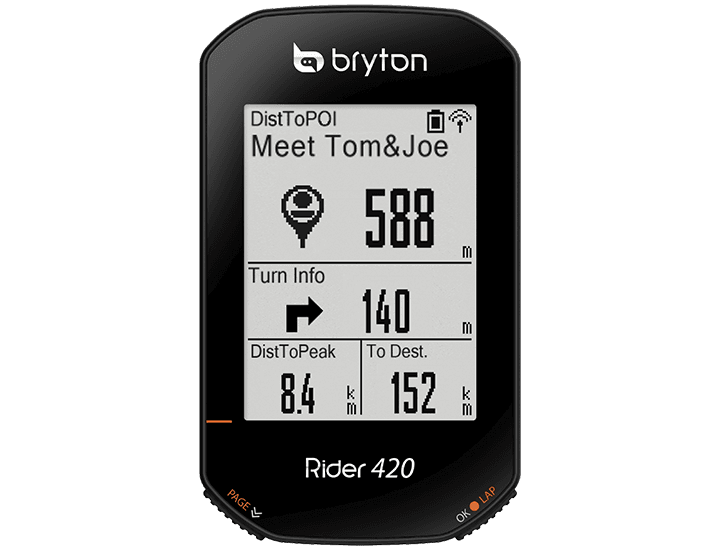
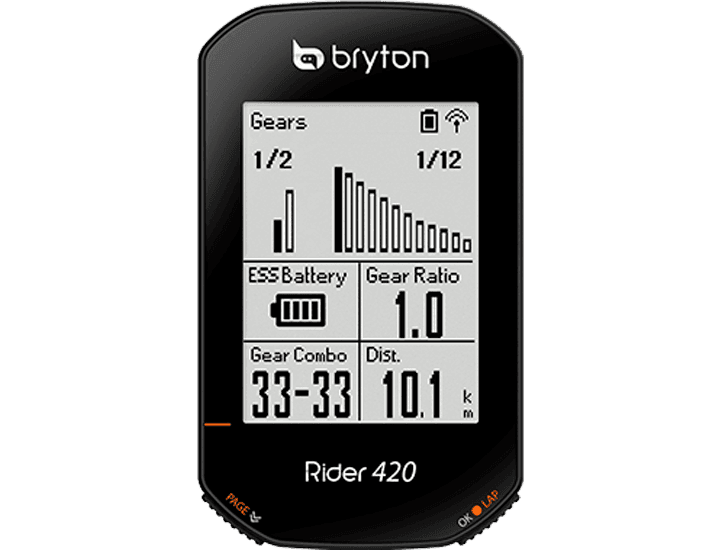

- Battery: 35 hours
- Connectivity: ANT+, Bluetooth
- Matching applications: Yes
- Navigation: Breadcrumb
- Color screen/Touch screen: none/none
- Screen size: 2.3 inches / 58 mm
- What we like about it: Great value for money, synchronized training programs.
- What we don’t like about it: It’s not very friendly for first-time Bryton users.
It is synonymous with value for money, and at $219 you can get a far better experience than that. The accompanying program allows you to create a route for yourself and sync it for route navigation. With up to 77 rich features claiming up to 35 hours of battery life, you won’t need to look around for your charger. You can also export training plans from TrainingPeaks to use in sync.
Bryton is not very user-friendly for first-time users, it takes some learning to use. But once you get used to it, it will work very well. If you don’t like the process, take a look at the Garmin EDGE 830. if you’re looking for rich features and a navigation system at a low price, then I don’t think there’s a better choice than that.
Product link:?
7. CATEYE QUICK WIRELESS CYCLE COMPUTER ($59.95)

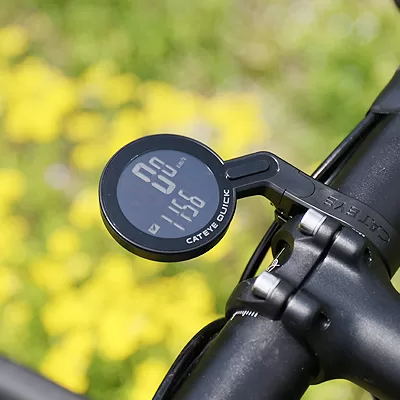
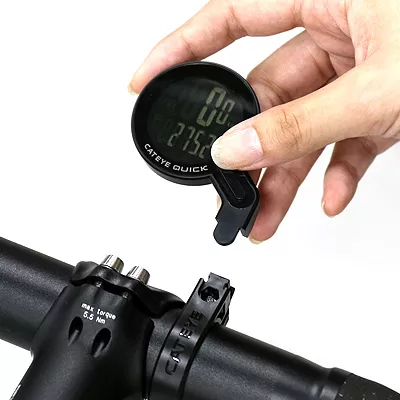
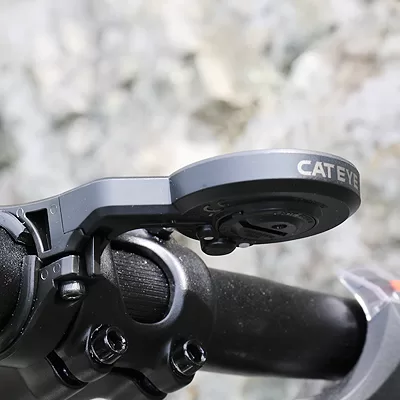
- Battery: 1 year (1 hour per day)
- Connectivity: None
- Matching applications: None
- Navigation: None
- Color screen/Touch screen: none/none
- Screen size: 93.5 X 54mm
- What we like about it: Easy to read, convenient, and super long battery life.
- What we don’t like about it: Less functionality, can’t export data, can only view instantly.
We tested it with the Garmin at the same time and the Cateye Quick was virtually indistinguishable in both speed and distance accuracy. Very good for this simple bike computer, which is the cheapest unit capable of distance measurement. It is also very easy to read quickly, with the forward reach neatly in view. In line with Cateye’s other simple bike computers, battery life is measured in years rather than hours.
No data export, no GPS, and very limited functionality. Yes, it’s pretty much only capable of recording simple data like speed and mileage, and it can’t be exported. But for a compact, inexpensive design that can go up to a year without battery replacement, it’s good news for dedicated riders who just need some simple real-time data.
8. Hammerhead Karoo 2 ($449)
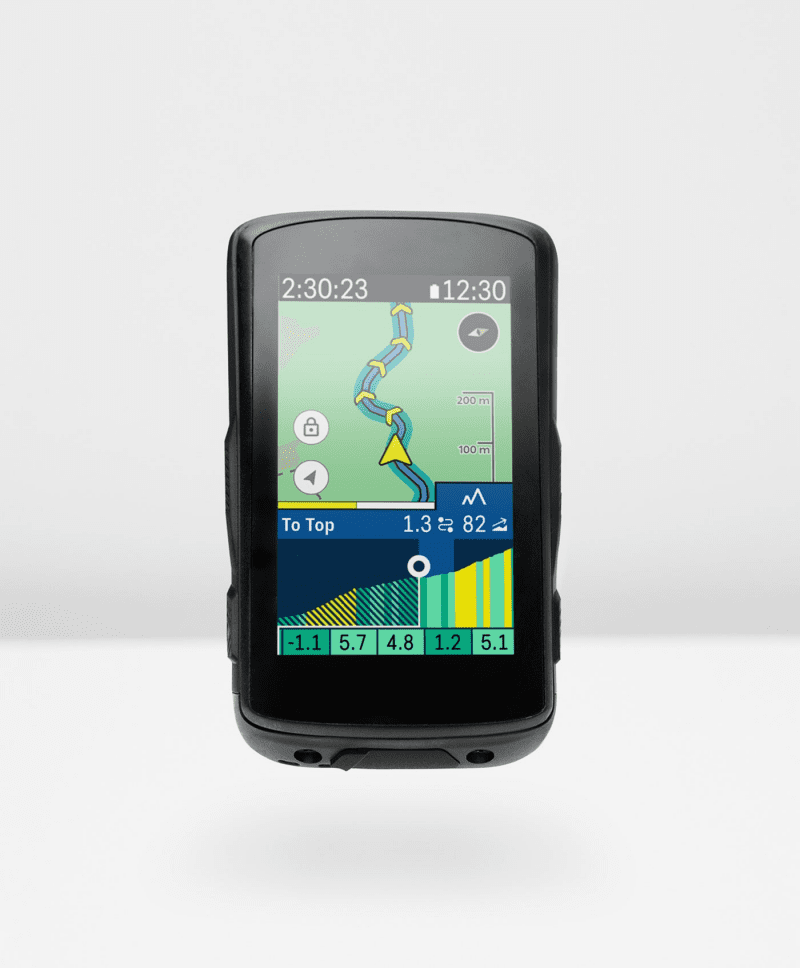

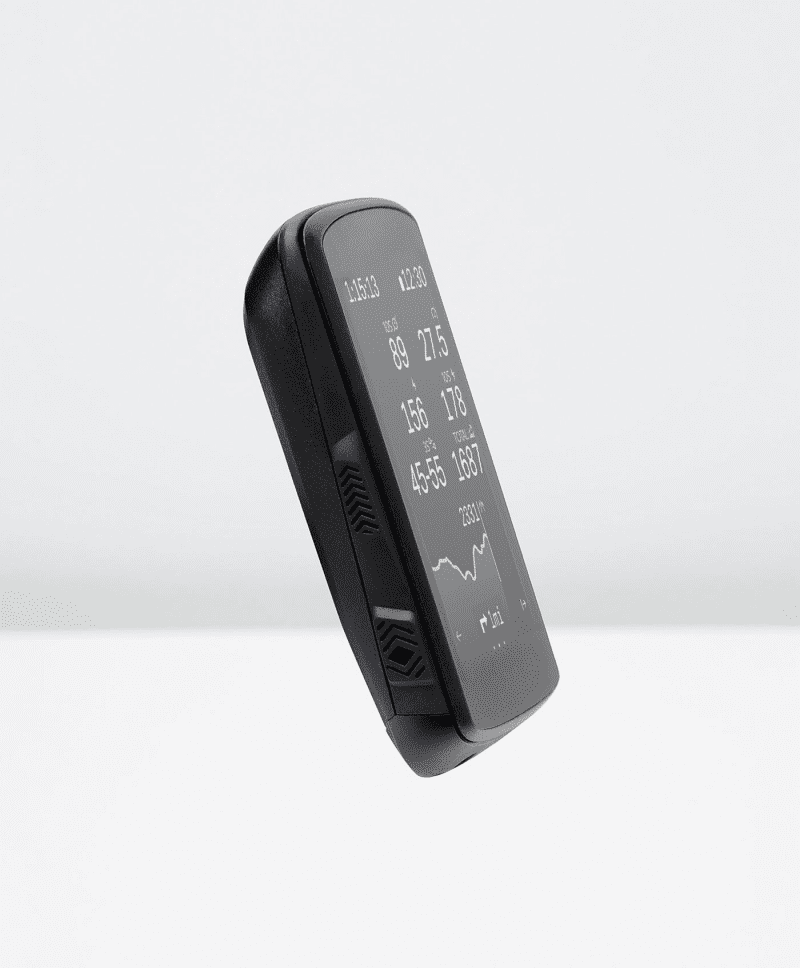

- Battery: 12 hours
- Connectivity: ANT+, Bluetooth, wireless network
- Matching applications: None
- Navigation: OpenStreet Map
- Color screen/Touch screen: Yes / Yes
- Screen size: 3.2 inches / 82 mm
- What we like about it: Comfortable touch screen, subtle screen display.
- What we don’t like about it: The short battery life.
The best touch screen on a bike computer today makes it more like a smartphone than anything else. The high-definition 3.2-inch screen is scratch-resistant, accurate, and responsive. The unit comes with a “linear lock” to keep the bike computer balanced while riding, or you can use the existing Garmin quarter mount to save money.
With a single battery life of 10 hours, it is not as comprehensive as competing products, but timely charging in actual riding does not affect usage. What it brings are a fine display and comfortable touch operation. If what you want is convenient control as well as a comfortable visual experience, it can certainly be taken home by you.
9. Wahoo Elemnt Roam v1 ($199)
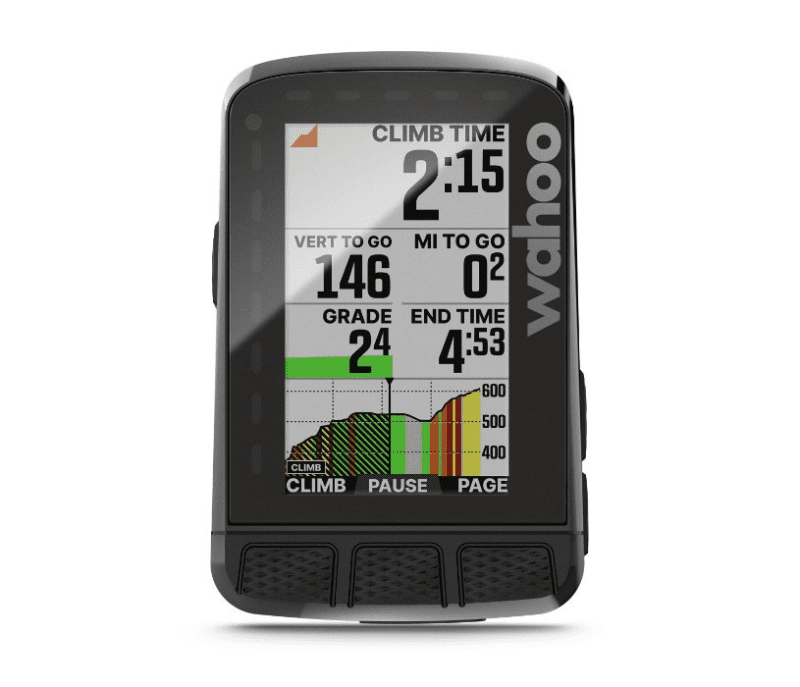
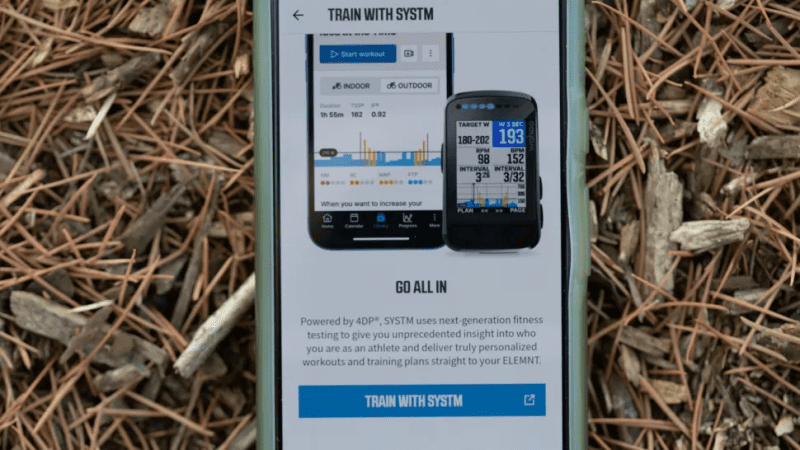
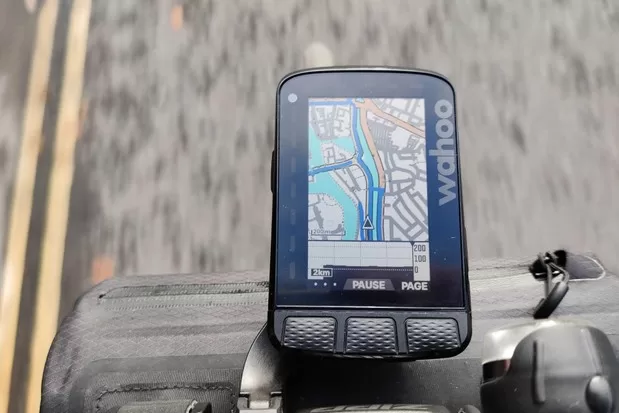

- Battery: 17 hours
- Connectivity: ANT+, Bluetooth, wireless network
- Matching applications: Yes
- Navigation: OpenStreet Map
- Color screen/Touch screen: Yes / No
- Screen size: 2.7 inches / 68.58 mm
- What we like about it: USB-C charging method, mobile linkage settings.
- What we don’t like about it: It’s not the touch screen.
The upgraded USB-C charging cable makes it very convenient to charge in the same way as most phones. The colorful screen and dual-band GPS chip make it very powerful. Initial settings can all be set up through the smartphone app, and when finished they can all be uploaded to the website through Strava. And routes or workouts can also be immediately synced from the most common route-building sites.
Unfortunately, it’s not a touch screen and you can’t get feedback by tapping directly on the screen. If you want subtle touch controls, consider the Hammerhead Karoo 2 mentioned above, but with this smart navigation and excellent display quality screen, it’s a very good choice at this price.
10. Wahoo Elemnt Bolt ($299.99)
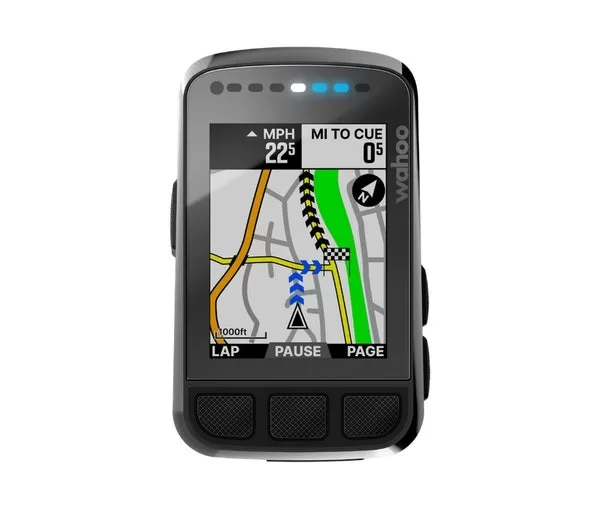

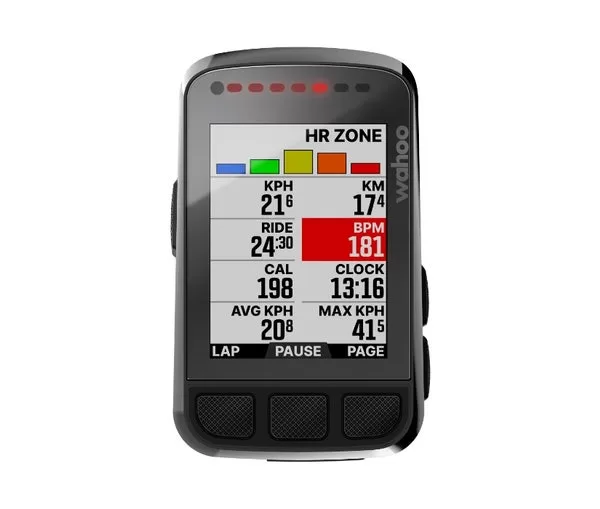

- Battery: 15 hours
- Connectivity: ANT+, Bluetooth, wireless network
- Matching applications: Yes
- Navigation: OpenStreet Map
- Color screen/Touch screen: Yes / No
- Screen size: 2.2 inches / 56 mm
- What we like about it: The aerodynamic compact design.
- What we don’t like about it: The screen is a bit small.
Very similar to the previous one, but designed with a smaller aerodynamic body for those fast riders. Used through the app that accompanies the phone, it is simplified and intuitive, with a totality that is unmatched by any other brand. And it is also very smooth to use with other third-party navigation software. The map display is very clear and concise and is by far the easiest to read I’ve ever used.
However, the 2.2-inch screen is a little too small for me! If you are a regular rider, maybe you want a bigger screen too, like the Garmin Edge 1040 Solar. But if you’re a speed-focused rider, I think the light and small size without losing performance is an excellent design. Seamlessly syncing data makes the experience easier and simpler.
Product link: ?
11. Sigma ROX 11.1 Evo ($169.99)
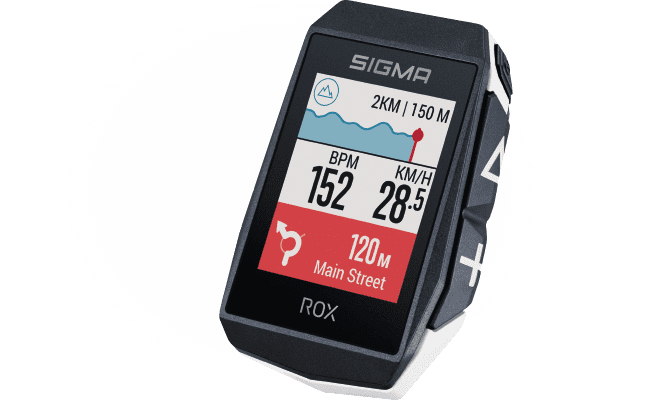
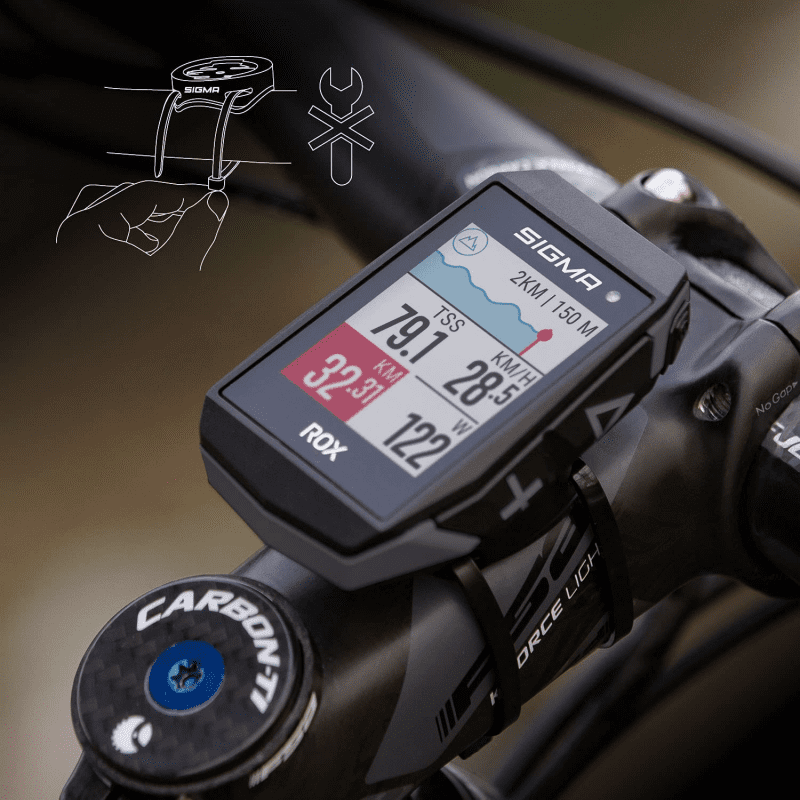
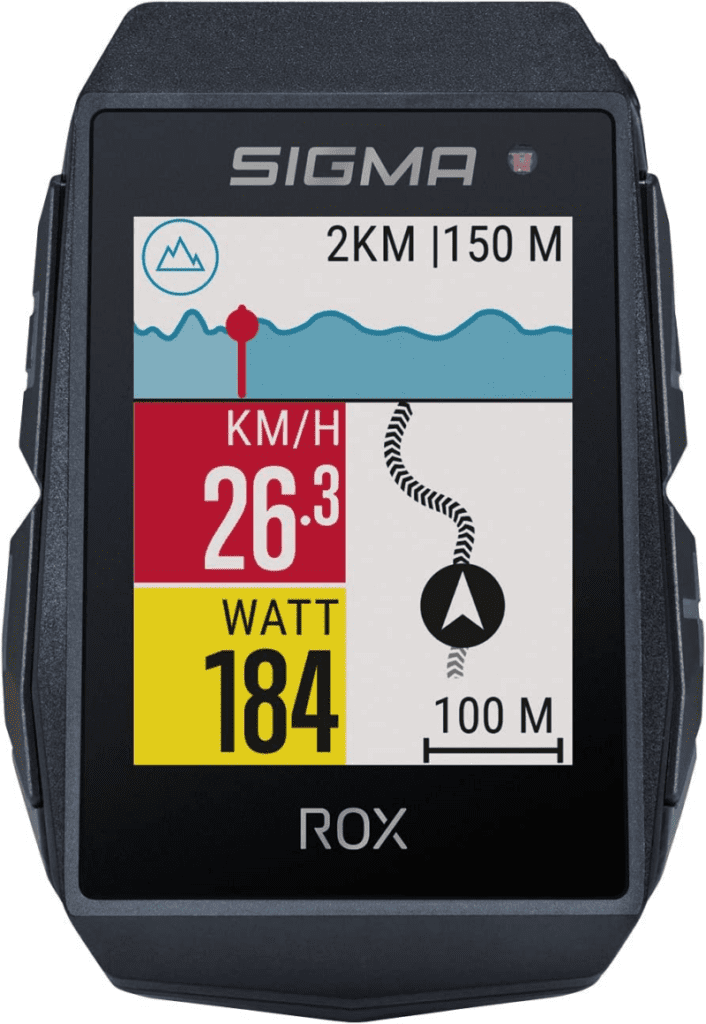

- Battery: 100 hours
- Connectivity: ANT+, Bluetooth
- Matching applications: Yes
- Navigation: Breadcrumb
- Color screen/Touch screen: Yes / No
- Screen size: 1.77 inches
- What we like about it: It’s suitable for anyone’s use and can share your cycling training.
- What we don’t like about it: The small size is not suitable for those who navigate.
Whether you are an elite rider, keep fit crowd, or want to share your ride tracks on a website, this is the perfect training partner for you. In addition to a wealth of training features, the GPS bike computer offers navigation as well as external sensors so you can focus entirely on your ride without thinking about the extras. You don’t have to doubt that it will do the rest of the work for you.
The 1.77-inch size is not very noticeable. For those who need a large screen to provide navigation, my recommendation is to go with the Garmin Edge 31030. It’s like a tablet being placed in front of your handlebars, making the entire navigation path very clear. But for the same price, you may not get something as good as the Sigma ROX 11.1 Evo.
How to choose a bicycle computer?
First of all, when you choose a bike computer you need to consider two main points. First, how much money do you want to spend on it? Secondly, whether you will be using the bike computer for a lot of navigation work.
If you ride a lot on familiar city streets or training grounds, you hardly ever use the navigation function. Good news, you can save some money on this. And spend that money on more critical data devices such as ride data, speed, distance, heart rate, and averages. Also can be paired with your heart rate tester and power meter.
But if you are a bicycle tourer or an adventurer who loves to explore fresh routes, you may need a lot of navigation data and a GPS for route tracking. You may need a bike computer with more memory and a larger screen to get more map information and tools to aid navigation and also allow you to see more clearly.
- What would you like to have on your bike computer?
- How much should I spend on my bike computer?
- What makes the best bike computer?
- How long should I look for a battery that lasts?
- How is the bike computer mounted on the bike?
What do you get in your bike computer?
On this question, I think it’s more important to ask, what information do you want to get?
If you only need the most basic cycling information, real-time speed, and the mileage of this exercise, the most basic CATEYE QUICK WIRELESS CYCLE COMPUTER in the text will provide you with this information. But if you don’t need to see this information in real-time, some of the best cycling apps allow you to do this on your smartphone.



But on the other hand, bike computers can be more weatherproof than smartphones, easier to be mounted on bikes, and easier to read while riding. Most notably, they are power efficient. More expensive bike computers will provide you with more training advice. If you want to improve your bike racing, you can use it together with a heart rate monitor as well as a power meter.
How much should I spend on my bike computer?
Just as you choose other accessories for your bike, your budget determines what kind of bike computer you can buy and also prioritizes the features you consider important.
Depending on your budget, your GPS computer may have maps, interval timers, in-depth power indicators, and a color touch screen as well as more connectivity. But with a minimum budget, you may get just a crude product, i.e., a black-and-white display and the most basic training metrics.
What makes the best bike computer?
The vast majority of bike computers are equipped with GPS chips and have access to other satellite networks such as GLONASS, BeiDou, and Galileo. almost all of the best bike computers offer some form of satellite navigation and provide base maps that allow itemized navigation as well as redirection. Some also allow you to create routes directly on the device.
The more affordable hosts won’t have a base map, but rather download offline maps from your phone for breadcrumb-style navigation. Most bike computers can upload data from the ride to the web and share it with friends.
If you like to get out and explore, you can choose a large screen and a clear and concise base map so you can quickly see where the navigation leads while riding. I don’t like to stop and tell where I’m going while riding.
How long should I look for a battery that lasts?
The battery life of your bike computer will determine how long you can enjoy your ride, especially if you need to rely on it for navigation or to get training data.

In general, the best bike computers tend to need to ensure that they have 15-20 hours of battery life because no one rides for 15 hours straight. So this life span won’t have any impact on your riding, but shorter battery life means you’ll need to recharge more often.
How is the bike computer mounted on the bike?
This is a critical factor, but one that is often overlooked when people make a purchase. That is how the bike computer will be attached to the bike.

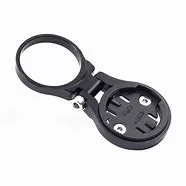
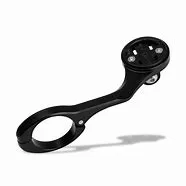


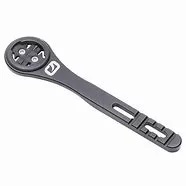
Most bike computers are attached to the handlebars or stem of the bike. Generally speaking, the more common the brand, the more ways to mount the bike computer, and Garmin is the leader in this field with over a dozen mounting options that allow you to decide where to mount the device.
Front mounts are also a popular form because they place the bike computer in front of the handlebars, allowing you to easily view data while riding. Those mounts also allow the bike computer to sit flush with the stem, giving the handlebars an overall cleaner as well as more streamlined appearance.
Conclusion
These are our picks for the best cycling computers. As more and more people start to care about their training habits, the health of their sport, and the level of their training. A good bike computer will give riders quick and clear access to this information and give real-time advice.
Although they all have almost the same function, mileage, speed, movement tracking, and so on series of data. But in this test, we have selected for you a variety of bike computers at different prices for you to choose from. There is the most simple and affordable CATEYE QUICK WIRELESS CYCLE COMPUTER and the most advanced large-screen solar-powered Garmin Edge 1040 Solar. You can choose your bike computer according to your needs. By the way, if you want to go riding in well-known terrain or special terrain, you can book your accommodation on IHG Hotels & Resorts. It is not only rich in variety but also easy to operate.
If you want to enhance your riding experience even more, take a look at Top 15 Best Road Bike Handlebars, which may provide you with a more comfortable or faster ride.
Finally, if you like our content, feel free to share it with your friends! If our content is helpful to you, you can click the email subscribe button below!

![[Orbea URRUN 10 20mph Review] – Best Used By People Who Enjoy Riding To Get AFeel For The Mountains!](https://bestbikeselect.com/wp-content/uploads/2023/09/2023-Orbea-URRUN-10-20mph-35_-1024x1024.jpg)
![[Specialized Turbo Como 5.0 Review] – Good Choice?](https://bestbikeselect.com/wp-content/uploads/2023/08/2023-Specialized-Turbo-Como-5.01_-1024x1024.webp)
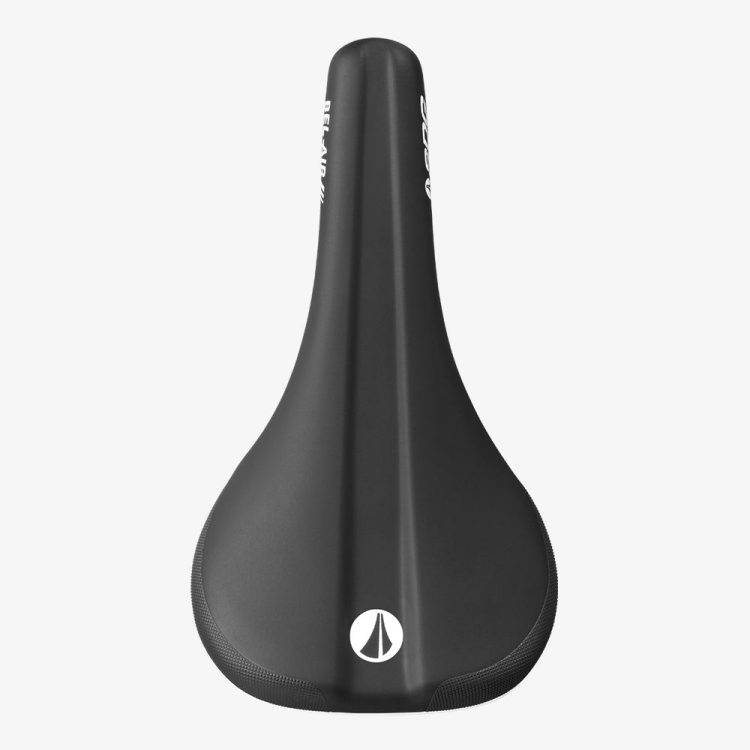
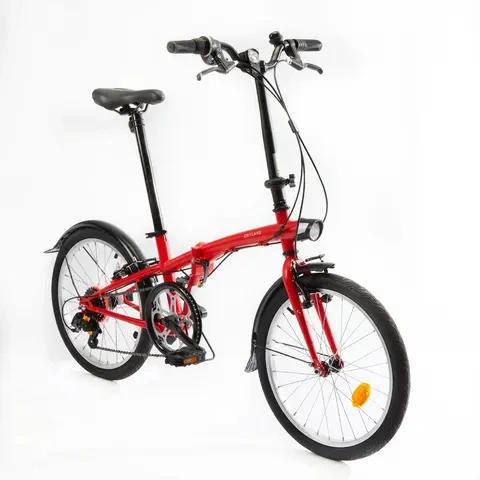

![2025 Built for Champions:[Orbea ORCA M21eTEAM PWR Review]](https://bestbikeselect.com/wp-content/uploads/2025/01/ORCA-M21eTEAM-PWR-1024x885.jpg)
![2025 Conquer Any Trail [Santa Cruz Bronson R Review]](https://bestbikeselect.com/wp-content/uploads/2025/01/Santa-Cruz-Bronson-R-1-1024x768.webp)
![2025 The All-Terrain Beast [Santa Cruz Hightower 3 MY24 Review]](https://bestbikeselect.com/wp-content/uploads/2025/01/Santa-Cruz-Hightower-3-MY24-1024x768.webp)
![The Best Comfortable Leisure Bike of 2025 [ Trek Verve 2 Lowstep Gen 5 ]](https://bestbikeselect.com/wp-content/uploads/2024/12/Verve-2-Lowstep-Gen-5-02-1024x681.png)
![2025’s Top Endurance Bikes [Cannondale Synapse Carbon 3 L Review]](https://bestbikeselect.com/wp-content/uploads/2025/01/Cannondale-Synapse-Carbon-3-L-1-1024x627.webp)
